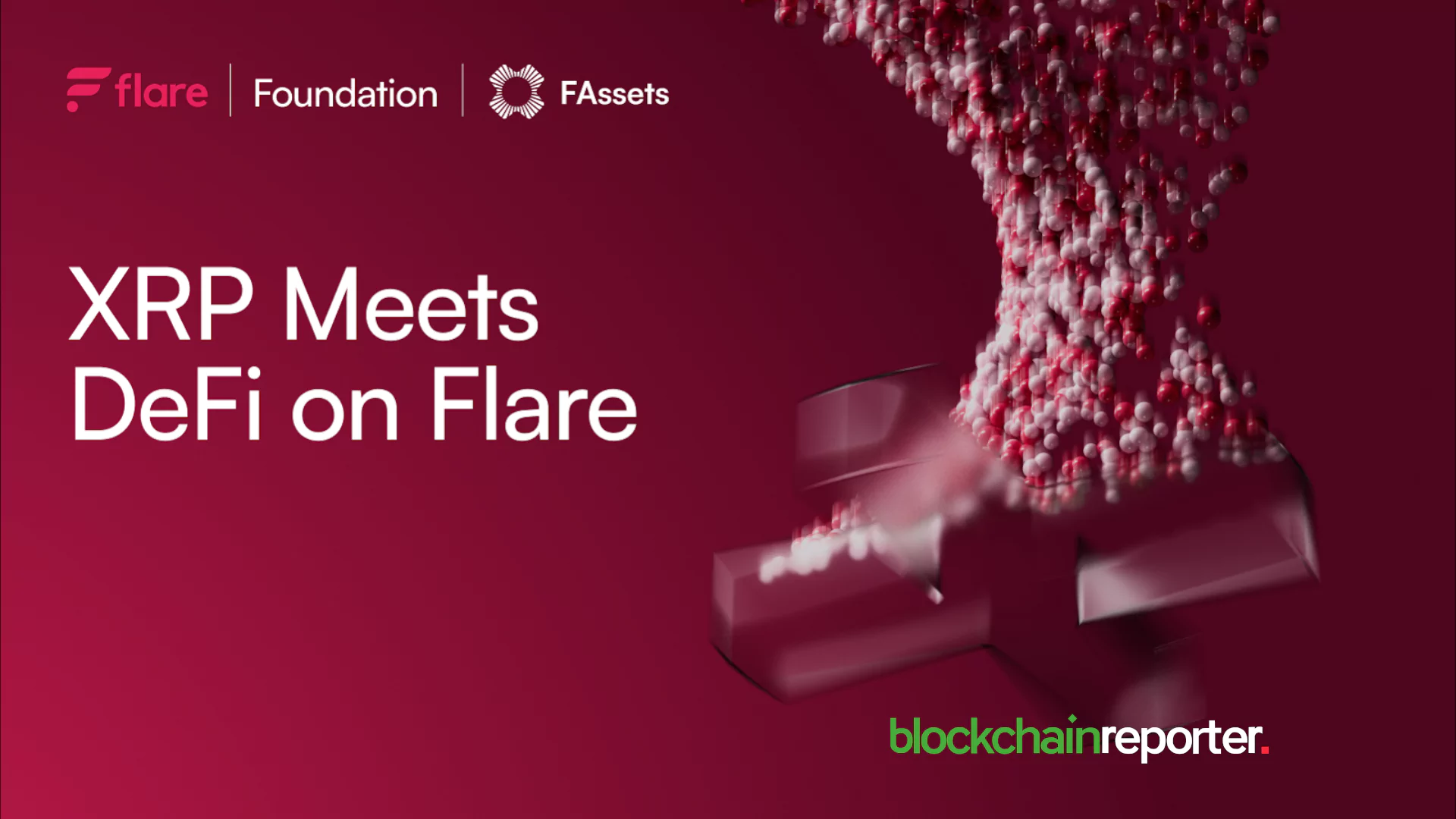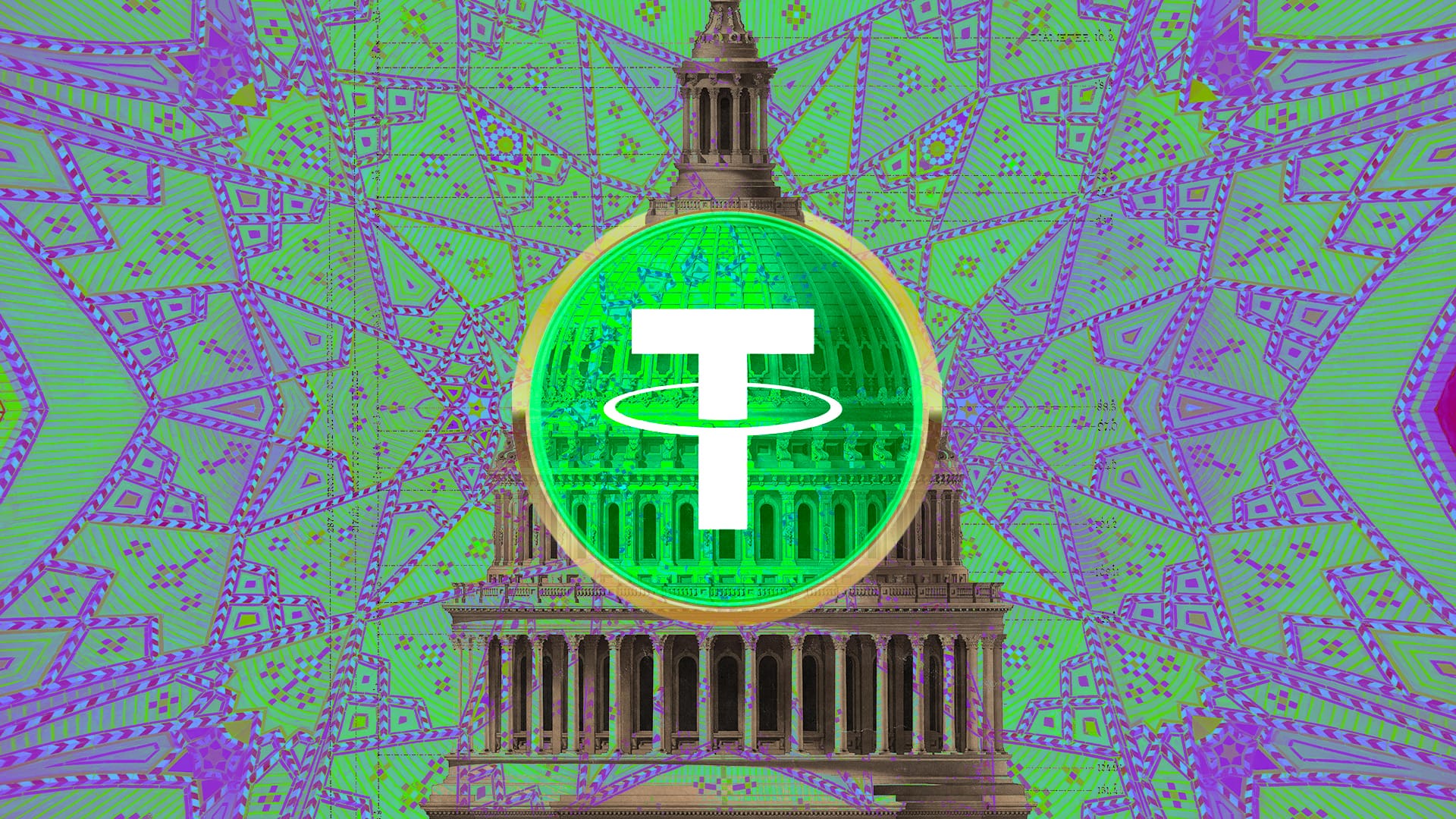
Sikkim State Lottery Results Today – 24th September, 2025 – Sikkim Lottery Sambad Result Live Update The Sentinel – of this Land, for its People
source

Sikkim State Lottery Results Today – 24th September, 2025 – Sikkim Lottery Sambad Result Live Update The Sentinel – of this Land, for its People
source

Flare’s long-anticipated bridge between XRP and decentralized finance is live. FAssets are on Flare mainnet today, beginning with FXRP v1.2. For the first time, XRP holders can mint a one-to-one representation of their holdings, FXRP, and use it across Flare’s growing DeFi stack. Flare’s team calls this the start of an “XRP DeFi awakening,” and the platform has shipped the tools for holders to start putting XRP to work immediately.
FAssets are Flare’s mechanism for bringing non–smart-contract assets like XRP into an EVM-compatible DeFi environment. Each FAsset is a 1:1 representation of the original token (so XRP → FXRP), backed by an over-collateralized network of independent agents and Flare’s on-chain data protocols. In practice, that means XRP, which itself doesn’t run smart contracts, can now participate natively in DEX trading, lending markets, stablecoin minting, liquid staking and other composable DeFi primitives on Flare.
The big value proposition is composability: once minted, FXRP moves freely across Flare’s DeFi ecosystem and can be integrated directly into protocols as a native building block, without kludgy workarounds. That opens pathways for XRP liquidity to power everything from automated market maker pools to collateralized loans and synthetic assets.
Flare frames FAssets security as an ongoing commitment. The system has already passed multiple independent audits. The launch notes at least four audits by firms, including Zellic and Coinspect, and has been tested through Immunefi-backed bug bounties and community reviews like Code4rena. On top of that, Flare says FAssets and other DeFi apps on the chain are monitored around the clock by Hypernative, and there are rapid-response procedures in place to deal with incidents.
Why such layered safeguards? Because FAssets handle high-value, complex operations, trustless bridging, collateral management and multi-chain minting, where institutional and retail stakeholders both expect continuous verification and resilience against new threat vectors. The Flare Foundation says it will continue investing in “robust, scalable security measures” to keep the system reliable for institutional actors and the XRP community.
There are several ways to acquire FXRP: minting it yourself, swapping on Flare DEXes, or using wallets with built-in functionality.
Please note that minting is capped at 5 million FXRP in week one to support a secure rollout; the cap will ramp up gradually thereafter. For a guided walk-through, Flare provides an FXRP minting video and technical docs at https://dev.flare.network/fassets/overview.
If you prefer not to mint, FXRP will also be available on Flare DEXes. The process is straightforward: acquire any Flare token, go to a DEX such as SparkDEX, BlazeSwap or Enosys, connect your wallet, and swap for FXRP.
Wallets like Luminite and Oxen Flow are positioned to make onboarding smoother. Luminite supports FAssets minting and redeeming, cross-chain bridging, and a built-in swap for FXRP; Flare says Luminite will soon route EVM tokens directly to XRP on XRPL (via Stargate + FAssets) without manual hops.
Oxen Flow is a self-custody mobile wallet designed to let users stake and swap FXRP, bridge assets while keeping full key control, and track earnings while using Flare’s cross-chain features.
To jumpstart liquidity and on-chain usage, Flare is distributing launch incentives in rFLR to DeFi pools that materially add to total value locked and on-chain activity. Key initial incentive targets include:
These incentives are framed as the start, not the finish. Over the coming weeks, Flare plans deeper integrations: FXRP will be enabled as collateral in Enosys Loans (CDP) with an rFLR-incentivized stability pool to back the platform’s first XRP-backed stablecoin.
A yield market (launch soon) aims to add incentivized LPs for perpetual tokens and curated vaults for easier yield management. When Firelight launches and stXRP (liquid staked XRP) becomes available, Flare expects a larger “XRPFi flywheel” — more partners, more collateral options, and more DeFi utility for XRP.
FXRP’s arrival on Flare is a major step for XRP liquidity. It turns a non–smart-contract native asset into a composable DeFi primitive on an EVM-compatible chain. With layered audits, continuous monitoring and a cautious minting cap at launch, Flare is signaling a security-first approach while offering aggressive incentives to bootstrap activity.
For XRP holders and DeFi builders, the question now is how quickly the ecosystem will absorb FXRP and what new products will emerge from tapping XRP liquidity in permissionless finance. Flare invites the community to start minting, swapping and integrating FXRP. The XRP DeFi awakening, Flare says, starts now.
BlockchainReporter is a trusted name in the cryptocurrency and blockchain technology news space, keeping its readers abreast of the latest and most significant trends in the industry.
Here at BlockchainReporter, our team of global writers is dedicated to providing price analysis on leading cryptocurrencies and covering the latest developments pertaining to bitcoin news, altcoins news, blockchain news, NFT news and cryptocurrency adoption news from around the world.

Where to Use Bitcoin? Blockchain Council
source


perspective
There is a saying that the best way to make money during a gold rush is to sell picks and shovels. The worst way, presumably, would be to run a government taskforce drafting regulations for the retailers of picks and shovels.
Perhaps relatedly, Bo Hines – who from January to August was the executive director of President Donald Trump’s council of advisors on digital assets – has been hired to run the US operations of Tether, the company behind USDT, the world’s largest stablecoin. USDT is a cryptocurrency that functions a little like a pick/shovel does during a gold rush. Now Tether will release a new U.S.-based stablecoin called USAT.
Anyone alarmed by the implications of Hines changing sides can be reassured. There is no conflict of interest, because Hines himself said so: “I stepped down from my roles touching anything related to crypto in the White House and I felt like this was a fantastic opportunity to jump into the private sector.”
Subscribe to our Coda Currents newsletter
Weekly insights from our global newsroom. Our flagship newsletter connects the dots between viral disinformation, systemic inequity, and the abuse of technology and power. We help you see how local crises are shaped by global forces.
It must have smarted for Hines to be languishing in the public sector drafting regulations for the crypto rush, while in the private sector people – including family members of senior administration officials – were making billions of dollars. USDT, the stablecoin Tether has created for the US market, is being marketed in partnership with Cantor Fitzgerald, which is run by Brandon Lutnick, son of Howard Lutnick, the U.S. Secretary of Commerce, so that too is being kept in the family.
In order to guarantee that Tether’s tokens will always be worth the same as a dollar, it owns a lot of US debt: some $127 billion worth at the end of July, which works out basically as $127 billion of free money for the U.S. government.
“Tether is by far and away the most important private-public partnership the U.S. government has, we’re buying more treasuries than anyone else in the private sector,” said Hines, which is an interesting way of defining ‘important’. Once upon a time, the major defence contractors would have ranked top of the list, but now it’s a company that buys debt so Trump can keep cutting taxes for his friends.
This is not to say the U.S. government isn’t concerned about crypto. The Office of Foreign Assets Control has sanctioned Iranian nationals, Alireza Derakhshan and Arash Estaki Alivand, and a network of foreign enablers, who were selling Iran’s oil to raise money for its armed forces via the medium of cryptocurrency.
“Iranian entities rely on shadow banking networks to evade sanctions and move millions through the international financial system,” said John Hurley, Under Secretary of the Treasury for Terrorism and Financial Intelligence. But you’ll scour that press release and related documents in vain for information about what specific cryptocurrency was being used by the Iranians to finance the sale of hundreds of millions of dollars worth of oil. Luckily, you can turn to this bit of analysis from Elliptic: “Alivand’s addresses have received a total of $300 million, while Derakhshan’s have received $442 million, mostly in the USDT stablecoin”.
Oh.
So, Iran sells oil for USDT; which creates demand for Tether; which buys US government debt. Cut out the middleman and essentially, thanks to the magic of the blockchain, the Iranian and US governments are in business with each other.
It seems a bit weird that the United States so enthusiastically prints $100 bills even though the only significant market for them is organised criminals, who do far more damage than the U.S. makes in profits from the trade. And it’s very disturbing that the government IS making the same mistake with cryptocurrencies.
TUVALU AHOY!
One of the annoying things about financial skulduggery is that new techniques keep getting invented all the time, even as the old techniques remain as useful as ever. If crypto is offshore’s newest manifestation, then flags of convenience are probably its oldest.
Ships have been flying other countries’ flags as a ruse de guerre for centuries, but it only really became a formalised business technique in the 1920s when American vessels reflagged as Panamanian so they could sell alcohol during prohibition. But as with everything offshore, a trick invented for naughty rich folks – in this case so they could drink cocktails without legal consequences – has morphed into a tool for criminals and scumbags to make life worse for everyone.
Flags of convenience are almost ludicrously artificial, even by the standards of other offshore trickery, in that registries often have only the sketchiest relationship with the country they’re nominally part of. The Palau, Marshallese and Liberian ship registries are all in the United States (as was Panama’s, until recently); St Kitts and Nevis’ is in the UK; Tuvalu’s is in Singapore; Togo’s is in Lebanon, etc. Small countries are basically just hiring out their sovereignty so foreigners can do dodgy stuff with boats.
The most recent manifestation of this is in Russia’s shadow fleet of ageing oil tankers, some of which lost their Liberian flags and re-registered under the flag of Gabon (effectively a private company based in the UAE), as they sought to continue evading Western sanctions while they sail through the English Channel. “The ease with which vessels can obtain flags without scrutiny, avoid ownership transparency and escape enforcement actions has created the conditions for an entire parallel shipping ecosystem,” notes the Royal United Services Institute (RUSI) in this fascinating paper.
Western countries have sought to do something about this, and some larger registries have become more compliant under pressure, but that has just encouraged new countries to hire out their flags to all-comers, including “Cameroon, Comoros, Gambia, Honduras, Mongolia, São Tomé and Príncipe, Sierra Leone and Tanzania”. RUSI calls for states issuing flags of convenience to be checked by the Financial Action Task Force, which raises the prospect of blacklisting for rogue actors.
I am not as a rule a big fan of the FATF (or indeed of how it goes about blacklisting countries), but the situation has got so bad, that perhaps it is the only body that could now make a difference and head off consequences that are almost impossible to overestimate. “Without such action, the shadow fleet will continue to entrench itself as a parallel system that threatens financial security, undermines legal norms, poses immeasurable environmental risk and raises the threat of geopolitical escalation,” RUSI’s paper concludes.
A version of this story was published in this week’s Oligarchy newsletter. Sign up here.
© 2025 Coda Media, Inc. All Rights Reserved.

| Source: BexBack co., LTD 
SINGAPORE, Sept. 24, 2025 (GLOBE NEWSWIRE) — BexBack Exchange, a provider of trade services to more than half a million traders around the world, announced its groundbreaking trading program, the 100% deposit bonus and 50 dollars welcome bonuses and 100 times leverage trading with no KYC requirements today.
The BexBack leadership said that they were removing old barriers that used to put the average investors to the periphery. Our platform will make you a $10,000 profit without having to spend a hundred thousand dollars to earn it.
Real Success: From $500 to $12,000 in Hours
BexBack is the power of transformation recently shown by Trader X. With a 100% deposit bonus, which BexBack had launched with an initial deposit of 500, this had been immediately doubled to 1000. In the case of Ethereum, which had up 15 percent after regulatory transparency, Trader X leveraged 80 times to manage an 80,000 size, producing 12,000 profit in half a day -2,400 percent.
The comparison:
The Mathematics of Success
BexBack manages to turn these market trends into one of the enormous opportunities. An average 4 percent Bitcoin movement:
This is a 120 times potential profit under the same market situation.
Perfect Market Timing
Bitcoin is currently ranging at $110,000 – $117,000 with a volatility of 5 percent per day. The predictable price movements are formed by institutional adoption, and the tools developed by BexBack help retail traders to take institution-level profits under these ideal conditions.
Smart Risk Management
The deposit bonus offered by BexBack offers two advantages, namely; amplified profits and protection against risk. The bonus funds provide further margin buffers such that traders can withstand pullbacks before they can grab significant moves.
Platform advantages:
Instant Access Worldwide
The BexBack no-KYC model allows activation of trading instantly. Registration is fast and immediate (Less than two minutes).
Launch Benefits:
Bonus on 100% deposit (two times your capital)
Welcome bonus of 50 dollars following initial trade.
Zero deposit fees
Virtual money of 10 BTC in a Demo Account
Multi-Asset Trading
It covers Bitcoin, Ethereum, Cardano, Solana and Ripple futures with leverage of up to 100x. Long and short positioning enables traders to make profits off long and short movements.
Market Opportunity
The markets of cryptocurrencies are undergoing massive institutional adoption that generate greater volatility and profitability. Through its platform, BexBack helps retail participants to seize institutional induced movements via equipment that turns small investments into huge returns.
Limited-Time Launch Program
Existing incentives are providing unprecedented opportunity in the best market conditions. The first mover has an upper hand with the cryptocurrency markets in a projected trajectory of super growth cycle.
Trust and Compliance
As a company under US Money Services Business licensing, BexBack is fully compliant with the regulatory foundation even as it continues to cater to 500,000+ active traders all around the world with institutional-level security measures.
Getting Started
Get registered now at www.bexback.com and get instant access to doubled capital and professional leverage tools. The present market environment and the barrierless platform as offered by BexBack promotes a one-of-a-kind collision between chance and availability.
Get big profit potential after registration of small investments.
About BexBack Exchange
BexBack Exchange offers crypto derivatives trading at an institutional level, but made available to retail investors. With a US MSB (Money Services Business) license, the Singapore-based platform has more than 500,000 traders with operations in different major cryptocurrency markets worldwide.
Media contact: Bexback Exchange communications:
Email: press@bexback.com
Website: www.bexback.com
Contact:
Amanda
business@bexback.com
Disclaimer: This content is provided by Bexback. The statements, views, and opinions expressed in this content are solely those of the content provider and do not necessarily reflect the views of this media platform or its publisher. We do not endorse, verify, or guarantee the accuracy, completeness, or reliability of any information presented. We do not guarantee any claims, statements, or promises made in this article. This content is for informational purposes only and should not be considered financial, investment, or trading advice. Investing in crypto and mining-related opportunities involves significant risks, including the potential loss of capital. It is possible to lose all your capital. These products may not be suitable for everyone, and you should ensure that you understand the risks involved. Seek independent advice if necessary. Speculate only with funds that you can afford to lose. Readers are strongly encouraged to conduct their own research and consult with a qualified financial advisor before making any investment decisions. However, due to the inherently speculative nature of the blockchain sector—including cryptocurrency, NFTs, and mining—complete accuracy cannot always be guaranteed. Neither the media platform nor the publisher shall be held responsible for any fraudulent activities, misrepresentations, or financial losses arising from the content of this press release. In the event of any legal claims or charges against this article, we accept no liability or responsibility. Globenewswire does not endorse any content on this page.
Legal Disclaimer: This media platform provides the content of this article on an “as-is” basis, without any warranties or representations of any kind, express or implied. We assume no responsibility for any inaccuracies, errors, or omissions. We do not assume any responsibility or liability for the accuracy, content, images, videos, licenses, completeness, legality, or reliability of the information presented herein. Any concerns, complaints, or copyright issues related to this article should be directed to the content provider mentioned above.
Photos accompanying this announcement are available at
https://www.globenewswire.com/NewsRoom/AttachmentNg/040af750-6aa0-49b8-9505-1682528e48f9
https://www.globenewswire.com/NewsRoom/AttachmentNg/b431c9d4-9781-4fa7-9f81-abce3b0a7a06
https://www.globenewswire.com/NewsRoom/AttachmentNg/cf15a860-93fa-40c3-8731-3bcd8c2f2cce
SINGAPORE, Sept. 18, 2025 (GLOBE NEWSWIRE) — With Bitcoin's price fluctuating below $120,000, many analysts predict a prolonged period of high volatility in the crypto market. Holding spot…
SINGAPORE, Sept. 17, 2025 (GLOBE NEWSWIRE) — For newcomers in crypto, the journey to financial freedom often feels out of reach. With limited capital, it can seem impossible to compete with…

Pi Network (PI) is once again under the spotlight as its price struggles to break past the $0.66 resistance level. Despite a modest recovery from recent lows near $0.62, the Pi Coin price has been trapped in a tightening range over the past four sessions.
Analysts suggest this coiling behavior signals a potentially sharp move ahead, with either a breakout or breakdown likely in the near term.
At the time of writing, Pi Network Coin trades around $0.65, having attempted several intraday pushes toward the $0.66 barrier, yet failed to sustain upward momentum. The current price action reflects classic range-bound dynamics, with lower volatility and dwindling volume as traders await a decisive shift in sentiment.
Beyond the charts, Pi Network market fundamentals continue to deteriorate. Recent data from Holderscan shows that the total number of PI holders has stagnated near 14,952, with a noticeable lack of new entrants into the network. This stagnation is reflective of growing disillusionment among early adopters.
Pi Network (PI) Coin was trading at around $0.65, up 0.85% in the last 24 hours at press time. Source: Brave New Coin
“Pi Network has seen a month-long trend of investors quietly exiting,” noted analyst Aaryamann Shrivastava. “This declining participation is eroding confidence in the project’s near-term prospects.”
Adding to the negative sentiment is the Relative Strength Index (RSI), which remains below the neutral level. As of June 3, the RSI hovers around 40.27, a sign of weak buyer momentum. Combined with low trading volume, this suggests that bulls are currently reluctant to take positions.
Compounding the pressure is user backlash over ongoing migration issues within the Pi Network Coin ecosystem. Many users have taken to social media to voice their frustration over a second wave of migration requirements, particularly as some remain stuck in unresolved KYC (Know Your Customer) states.
While the second migration captures attention, Pi Network’s Validation Bonus remains unaddressed in both community discussions and the official roadmap. Source: The Times of PiNetwork via X
“This Pi of a thing is nonsense. After mining for years we are denied access to our coin,” wrote one user on X, expressing growing anger with the Pi cryptocurrency development process.
Despite announcements from parody accounts claiming that a second migration phase had begun, the Pi Core Team has not issued any official confirmation. Still, confusion persists as users see unexpected prompts in their apps asking for further verification steps. The situation has left many feeling locked out of their balances, just as Pi prepares for a major token unlock.
One of the biggest looming challenges for Pi crypto is the scheduled release of 276 million PI tokens in June. Valued at approximately $176 million, this unlock has the potential to flood the market with new supply, creating additional downward pressure on the Pi currency value.
With sentiment already fragile, analysts warn that a failure to hold current support at $0.61 could trigger a sharper decline toward $0.57 or even the psychological $0.40 mark.
“The Pi token unlock will be a major stress test for the market,” one trader noted. “Without increased demand or a shift in sentiment, there’s little to absorb that kind of supply.”
From a technical perspective, the Pi Coin market remains trapped between support at $0.62 and resistance at $0.66. A successful close above $0.66 would open the door to a potential rally toward $0.6931, the May 29 high. However, a breakdown below $0.61 could expose the next major support near $0.57.
Pi Network Coin must break the $0.80 resistance to revive the recent bullish momentum. Source: Greatvic001 on TradingView
The MACD (Moving Average Convergence Divergence) remains flat but positive, indicating that momentum is coiled but undecided. Meanwhile, the RSI has climbed slightly to 54.32 in some timeframes, but lacks the strength typically seen in bullish breakouts.
For Pi Coin value to climb meaningfully, bulls will need to reclaim the $0.65–$0.66 zone with convincing volume and renewed investor participation. Until then, the market remains vulnerable to further downside, especially with a significant token unlock and migration-related confusion hanging in the balance.
While Pi mining and early enthusiasm around Pi cryptocurrency value gave the project significant traction, sustained growth now depends on resolving technical bottlenecks and restoring trust within the community. Until then, Pi Network trading is likely to remain under pressure, with cautious optimism among long-term supporters.
In the coming weeks, all eyes will be on the $0.66 level — a breakout here could change the narrative. But for now, Pi remains in limbo.
24 Sep 2025
24 Sep 2025
24 Sep 2025
Aditya Das|24 Sep 2025|News|
Andy Pickering|24 Sep 2025|Podcasts|
Naveed Iqbal|24 Sep 2025|News|
Naveed Iqbal|24 Sep 2025|News|
Sven Luiv|24 Sep 2025|News|
Auckland / Melbourne / London / New York / Tokyo
A Techemy company
PO Box 90497, Victoria St West, Auckland Central, 1010, New Zealand.
© 2025 Brave New Coin. All Rights Reserved.
Sponsored

Coins
Top 100 Coins
Trending Cryptos
Performance
Recently Listed
Gainers
All Categories
All Time High
Blockchains
Global Market Data
Ecosystems
Fundraising
Funding Rounds
Funds
Analytics Dashboard
IDO/ICO
IDO/ICO
IDO Launchpad ROI
Launchpads
CEX Launchpad ROI
Launchpool
Analytics Dashboard
Node Sale
Exchanges
CEX
CEX Transparency
CEX Listing Performance
DEX
Exchange Tokens
ETH Bridge
Token Unlocks
Token Unlocks
Analytics
VC Pressure
Products
Research
Rewards
Maps
Drop Hunting
Alerts
Converter
Widgets
Market Data API
Futures and Options
Affiliate Program
Watchlist
Portfolio
Pi Coin is grabbing attention again after the rollout of Protocol v23 on its testnet, syncing up with Stellar Core v23.0.1. For Pi Network, this is a serious technical step forward, and while it’s still early, the market seems to be waking up to it.
Testnet 1 blockchain has been upgraded to protocol 22.
It will be followed by an upgrade to version 23 then mainnet version to 23.
KYC will be decentralized and be used by other companies. It will generate revenue to pi as it offers a wide range of verification, using a variety… pic.twitter.com/plvmIY0c9e
The upgrade was validated with block 20,824,824, and here’s the kicker — zero failed transactions. Each block can now support up to 1,000 transactions, which is a big leap in stability. Developers finally have a stronger framework to test dApps before they hit mainnet.
There’s also a new decentralized KYC system in the works. Instead of clunky centralized checks, it’s designed to tie into national IDs, which could make Pi more open to external projects. In short: it’s about building legitimacy, something Pi desperately needs if it wants to compete.
On the charts, Pi hasn’t exactly been exploding. Since May, it’s been stuck inside a descending channel. Right now, price is hovering around $0.3586, sitting near the midline. RSI is at 49.8 — neutral territory. The MACD is just barely positive, suggesting a reversal could be brewing if buyers actually show up.
A clean breakout from the channel could light a path toward $0.65, then $1.00, and even $1.67 if momentum carries. Some bullish calls go further, suggesting a move toward $4, which would be a 1000% rip from current levels. But if Pi can’t break resistance? $0.32 becomes the first stop, maybe even $0.18 — which would be ugly, a 50%+ drop.
Can Pi actually hit 100x and land somewhere near $36? Honestly, not anytime soon. With a $2.9B market cap, it’s already heavy, and those kinds of gains are almost unheard of unless mainstream adoption explodes.
Still, there’s a long-term case if — and it’s a big if — Protocol v23 makes it to mainnet smoothly, decentralized KYC gets traction, and more exchanges decide to list Pi. Then maybe, just maybe, Pi could climb way beyond today’s numbers. For now though, the dream is alive, but the road is long.
The post Pi Coin Price Prediction: Protocol v23 Goes Live – 100x Dream or Just Hype? first appeared on BlockNews.
Read More
Pi Coin is grabbing attention again after the rollout of Protocol v23 on its testnet, syncing up with Stellar Core v23.0.1. For Pi Network, this is a serious technical step forward, and while it’s still early, the market seems to be waking up to it.
Testnet 1 blockchain has been upgraded to protocol 22.
It will be followed by an upgrade to version 23 then mainnet version to 23.
KYC will be decentralized and be used by other companies. It will generate revenue to pi as it offers a wide range of verification, using a variety… pic.twitter.com/plvmIY0c9e
The upgrade was validated with block 20,824,824, and here’s the kicker — zero failed transactions. Each block can now support up to 1,000 transactions, which is a big leap in stability. Developers finally have a stronger framework to test dApps before they hit mainnet.
There’s also a new decentralized KYC system in the works. Instead of clunky centralized checks, it’s designed to tie into national IDs, which could make Pi more open to external projects. In short: it’s about building legitimacy, something Pi desperately needs if it wants to compete.
On the charts, Pi hasn’t exactly been exploding. Since May, it’s been stuck inside a descending channel. Right now, price is hovering around $0.3586, sitting near the midline. RSI is at 49.8 — neutral territory. The MACD is just barely positive, suggesting a reversal could be brewing if buyers actually show up.
A clean breakout from the channel could light a path toward $0.65, then $1.00, and even $1.67 if momentum carries. Some bullish calls go further, suggesting a move toward $4, which would be a 1000% rip from current levels. But if Pi can’t break resistance? $0.32 becomes the first stop, maybe even $0.18 — which would be ugly, a 50%+ drop.
Can Pi actually hit 100x and land somewhere near $36? Honestly, not anytime soon. With a $2.9B market cap, it’s already heavy, and those kinds of gains are almost unheard of unless mainstream adoption explodes.
Still, there’s a long-term case if — and it’s a big if — Protocol v23 makes it to mainnet smoothly, decentralized KYC gets traction, and more exchanges decide to list Pi. Then maybe, just maybe, Pi could climb way beyond today’s numbers. For now though, the dream is alive, but the road is long.
The post Pi Coin Price Prediction: Protocol v23 Goes Live – 100x Dream or Just Hype? first appeared on BlockNews.
Read More

The GIST: The US Open tips off today with Fan Week, a pre-tourney event that the final tennis Grand Slam organizers have capitalized on by inviting more fan (and sponsor) participation. While JPMorgan Chase has been a longtime US Open partner, the banking powerhouse is keeping things fresh in its 2025 plans for the Open as it wraps a successful year in women’s sports.
The portfolio: Like many other financial brands, Chase has been a long-term partner in women’s tennis and golf, but it’s also realizing the opportunity with women athletes and other sports. In April, the bank added WNBA star A’ja Wilson to its athlete ambassador roster and in June partnered with The GIST to promote its unique capsule collection with Round21 for the KPMG Women’s Championship, a women’s golf major.
The US Open: While Chase has teamed up with the Grand Slam for decades, it’s considering how to create experiences for what the event has become: a cultural moment. Speaking with The GIST last week, Chase sports marketing head Kate Schoff said, “The Open is not about a tennis event any longer, it’s about an entertainment event,” describing how Arthur Ashe manages to capture the buzzy allure of NYC with its celeb sightings and infamous cocktails.
The landscape: Chase isn’t the only financial brand looking to bank cool points with sports fans. During WNBA All-Star Weekend, American Express (AMEX) offered an exclusive entrance to events and cashback for AMEX card members, with loyalty programs proven to drive consumer spending.
Zooming out: While long-term sports partnerships are powerful, Chase’s refreshed approach unlocks a different appeal by teaming up with up-and-coming cultural curators and tastemakers. And being relevant matters — consumers adore cool brands.
Sign up for The GIST and receive the latest women's sports business news straight to your inbox three times a week